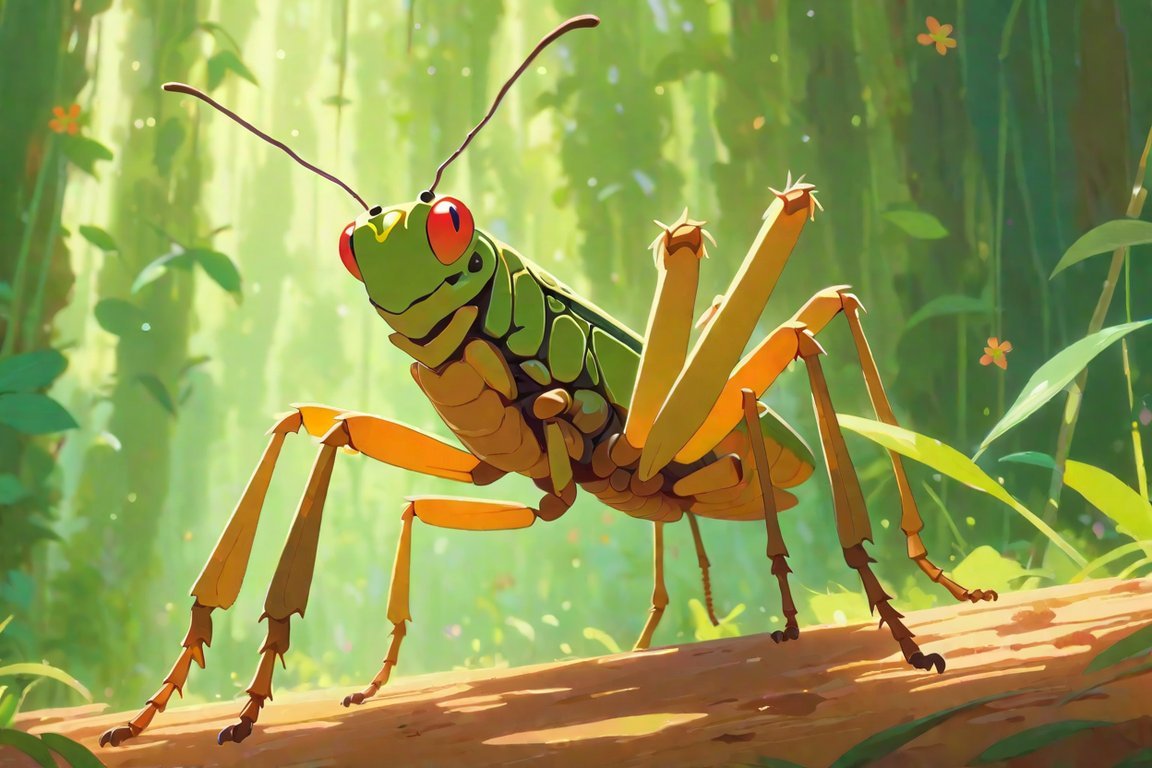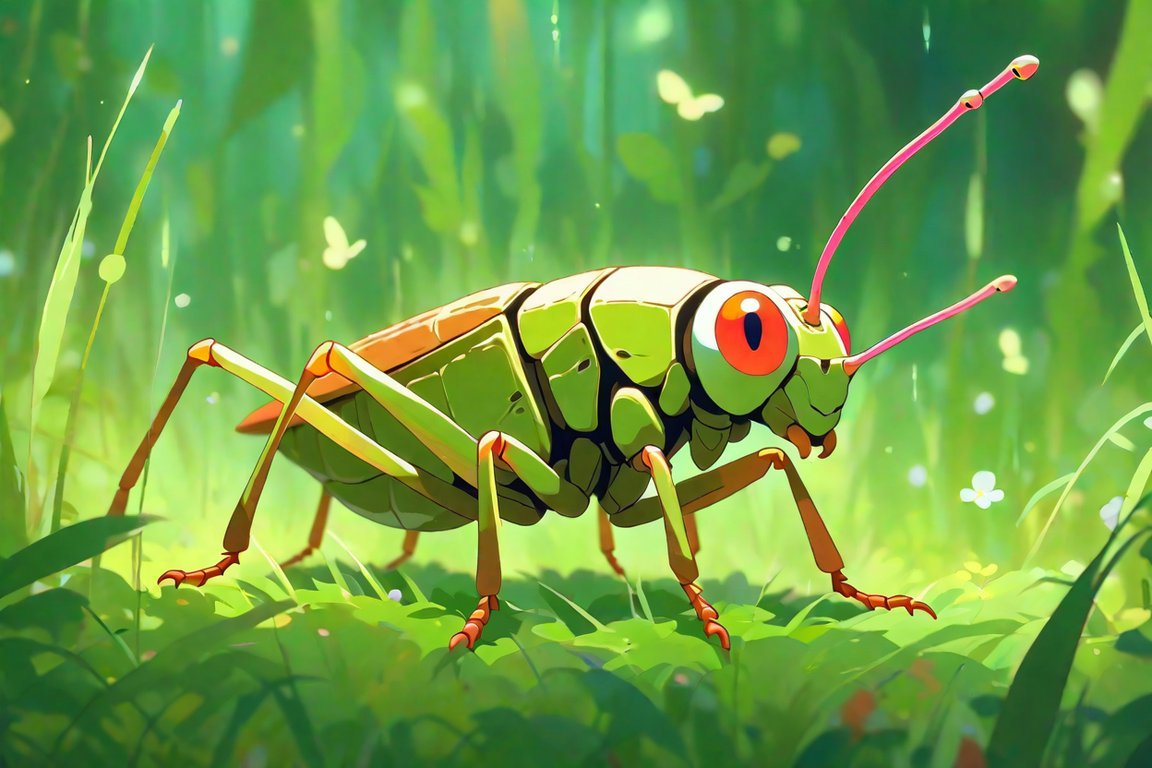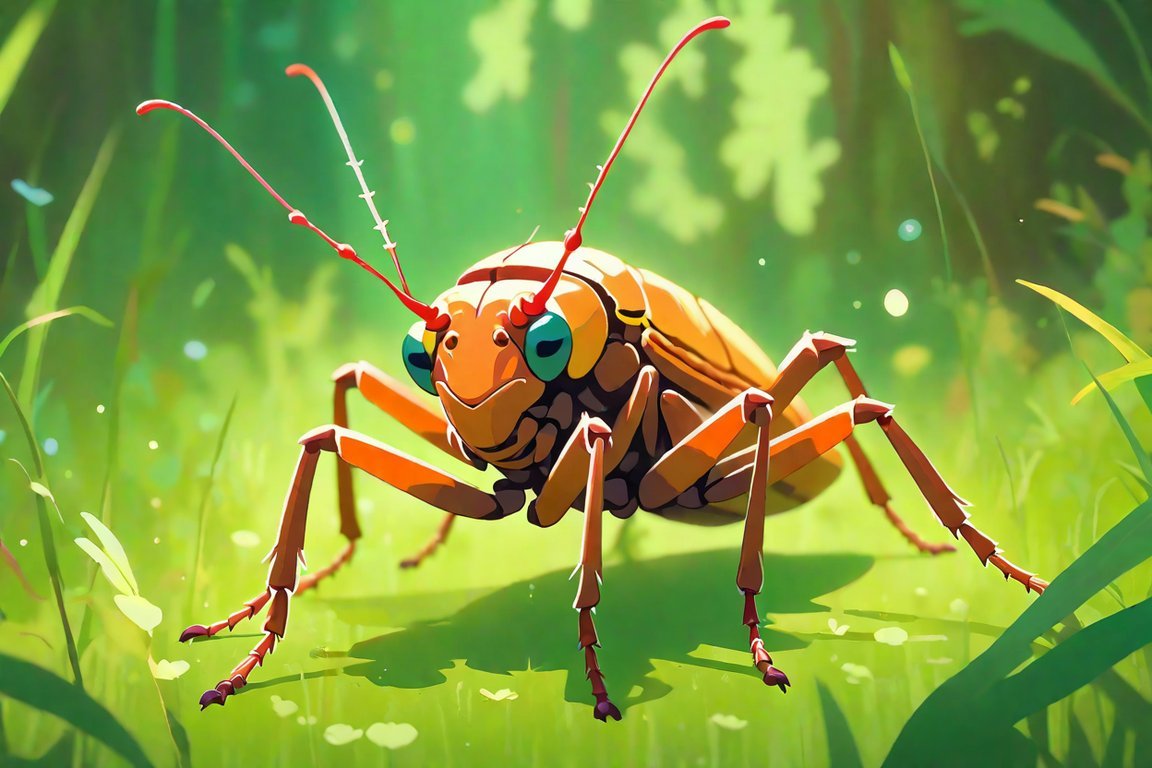Get ready to be amazed by the fascinating world of crickets! In this article, we will delve into the captivating realm of these small yet remarkable insects. From their unique biology to their mesmerizing behavior, we will uncover a plethora of fun facts about crickets that will leave you astounded. Join us as we explore the intriguing aspects of nature’s very own insects and discover the wonders they hold.

Key Takeaways:
- Only male crickets can chirp.
- A cricket’s chirp can be affected by temperature, with warmer temperatures resulting in quicker chirps.
- Crickets were historically kept as pets in China and Japan.
- Crickets have compound eyes that provide excellent eyesight.
- In some countries, such as Thailand, crickets are considered a delicacy.
- There are approximately 900 species of crickets.
- Crickets can be found all over the world, except in very cold regions.
- Crickets thrive in moist and humid areas with plenty of plants.
- The name “cricket” comes from the sound they make.
- Crickets are like living thermometers, with ears located on their knees.
- Crickets have the potential to have a positive impact on the environment.
Fun Facts About Crickets
Crickets, those little insects that fill the night air with their melodious chirping, have more to offer than meets the eye. These fascinating creatures are bursting with intriguing details that highlight their importance in the natural world. So, let’s dive into some captivating fun facts about crickets!
Only Male Crickets Chirp
Did you know that only male crickets have the ability to produce that enchanting chirping sound? Their rhythmic and melodious calls serve multiple purposes, including attracting a mate and establishing territory. It’s their unique way of serenading the world.
Temperature Can Affect a Cricket’s Chirp
Next time you hear the familiar melody of the male cricket, take note of the temperature around you. Warmer temperatures can actually speed up a cricket’s chirping, leading to a higher pitch and faster rhythm. It’s like their very own musical thermometer!
Crickets as Pets and Culinary Delicacies
In some cultures, crickets have held a special place as pets. In China and Japan, people would keep crickets as companions, cherishing their soothing chirps. On the other hand, in countries like Thailand, crickets are considered edible delicacies, often served as crunchy snacks or gourmet dishes. Talk about a diverse range of experiences with these amazing insects!
Compound Eyes and Incredible Vision
Crickets possess compound eyes, which are made up of an array of lenses. This design allows them to have exceptional eyesight, enabling them to spot even the tiniest movements or changes around them. It’s like having a thousand tiny eyes to explore the world with!
Crickets: A Global Phenomenon
With around 900 different species, crickets have a cosmopolitan distribution. They can be found in nearly every corner of the world, except for the colder regions beyond 55° North and South latitudes. These tiny creatures have managed to conquer the globe with their captivating presence.
Moist Environments: A Cricket’s Paradise
Crickets thrive in moist and humid environments teeming with vegetation. Their preferred habitats include grasslands, forests, and even your own backyard garden. Within these lush surroundings, they find ample food sources and shelter, allowing their populations to flourish.
The Origin of the Name
Ever wondered how crickets got their name? It’s quite simple, really. Their characteristic chirping sound resembles the repetitive chirping noise of a cricket’s call. That distinctive sound earned them their moniker and continues to resonate with nature lovers everywhere.
Melodious Thermometers with Ears on Their Knees
Here’s an extraordinary fact: crickets can act as living thermometers. The rate at which they chirp can indicate the surrounding temperature. Additionally, these incredible insects have ears located on their knees. It’s an anatomical marvel that helps them detect sounds and communicate with their fellow crickets.
The Unsung Heroes
Beyond their enchanting chirps and fascinating features, crickets play an essential role in the ecosystems they inhabit. They contribute to seed dispersal, nutrient recycling, and serve as a significant source of food for various creatures, including birds, reptiles, and mammals. These industrious little insects just might be the unsung heroes of the natural world.
Conclusion
Crickets, with their captivating chirping and intriguing characteristics, never cease to amaze. From their gender-specific melodies to their eyesight and unique culinary experiences, there is so much to discover about these remarkable insects. So, the next time you encounter a cricket’s melodious tune, take a moment to appreciate the wonder of their existence.
Here are some fascinating fun facts:
- Did you know that Aristotle had a remarkable impact on fields such as biology, ethics, and politics? Explore more fun facts about Aristotle here!
- Dive into the intriguing world of Kanye West with these fun facts that will leave you astonished! Click here to uncover the hidden aspects of Kanye’s life.
- Discover interesting trivia about Selena Quintanilla, the beloved Mexican-American singer. Don’t miss out on these captivating fun facts, available here!
- Are you a taco lover? Prepare to be amazed by these mind-blowing fun facts about tacos. Click here to satisfy your curiosity and expand your taco knowledge.
Remember, knowledge is power!
Some Cricket Species: Masters of Song
- Key Takeaways:
- Male crickets use their exceptional singing abilities to attract females and establish their territory.
- Crickets produce sound by rubbing their front wings together, a process known as stridulation.
- Auditory organs called tympanal organs on their lower forelegs enable crickets to hear their own songs and the calls of other individuals.
Have you ever wondered why those enchanting nighttime melodies fill the air during warm summer evenings? Look no further than the fascinating world of crickets! Insects known for their exceptional singing abilities, some cricket species have mastered the art of creating captivating melodies that not only reverberate through the night but also serve crucial purposes. So, let’s dive into the intricacies of these musical insects and uncover the secrets behind their mesmerizing tunes.
Male crickets, in particular, are renowned for their melodious repertoire. Through their intricate songs, they communicate and attract receptive female crickets. Much like a skilled musician, each cricket species has its own unique song, often comprised of distinct chirping patterns and rhythms. The rugged terrains and dense vegetation where these insects dwell are transformed into natural concert halls, where male crickets tirelessly serenade potential mates.
Curious about how these tiny creatures create such beautiful symphonies? Just like a musician strums a guitar to produce music, crickets produce sound by rubbing their front wings together. Male crickets possess a specialized vein at the base of their forewings that acts as a scraper, allowing them to create melodies with a unique pitch and rhythm. The resulting romantic tunes fill the night, captivating both listeners and potential mates.
To ensure that their performances don’t go to waste, crickets possess remarkable hearing abilities. They have auditory organs known as tympanal organs located on their lower forelegs, which pick up the subtlest of sounds. These organs grant crickets an acute sense of hearing, enabling them not only to appreciate their own songs but also to detect the calls of other crickets in their surroundings. It’s a symphony of communication, with each cricket contributing their part to the acoustic landscape.
Interestingly, the exceptional singing abilities of some cricket species are not limited to attracting mates alone. These melodious melodies also have an ecological significance. The sound produced by male crickets can serve as a defense mechanism, warning other males to keep their distance or risk confrontation. It’s a battle of songs, where the most impressive performers earn the right to claim their territory.
In conclusion, crickets are truly masters of song, showcasing their exceptional singing abilities to communicate, attract mates, and establish their dominance. Through the delicate art of stridulation, these tiny insects produce enchanting melodies that fill the air during warm summer nights. So the next time you find yourself captivated by a distant cricket chorus, take a moment to appreciate the intricate world of these musical marvels.
References:
– ThoughtCo: Crickets and Katydids – Fun Facts
– atonce.com: How Do Crickets Chirp?
Crickets Play Important Roles in the Food Chain and Ecosystem
Crickets, those tiny insects that chirp on warm summer nights, might seem insignificant, but they actually play crucial roles in the food chain and ecosystem. In this article, we will explore why crickets are more than just a source of background noise and uncover their fascinating contributions to the natural world.
The Conversion of Plant Biomass
Crickets are herbivorous primary consumers, nourishing themselves primarily on plant matter such as leaves, fruits, flowers, and seeds. This diet allows them to convert plant biomass into energy and essential nutrients. The energy and nutrients derived from crickets can then be passed on to other organisms higher up in the food chain. This conversion process is vital for the functioning and balance of ecosystems.
Driving Natural Processes
Beyond their role as converters of plant matter, crickets also help natural processes move along faster than they would have otherwise. They sit in the food chain, playing a critical part in keeping nature intact. By contributing to the breakdown of organic matter and aiding in nutrient recycling, crickets ensure that ecosystems thrive. In this way, they help maintain the harmonious coexistence of various organisms.
A Varied Diet
Crickets have a remarkably diverse range of food preferences. Alongside their fondness for plants such as leaves, stems, and flowers, crickets also feed on decaying matter and microorganisms found on organic matter. This wide-ranging appetite further emphasizes their significance in the ecosystem. Crickets not only break down waste but also regulate insect populations, contributing to the overall balance of the food chain.
Pollinators and Soil Health
In addition to their dietary contributions, some cricket species also play a role in pollination. As they move from plant to plant, these crickets aid in the growth and seed production of various plant species. Their accidental transfers of pollen contribute to the reproduction and genetic diversity of plants within their habitats.
Furthermore, crickets make important contributions to soil health. As they break down waste in their environment, they enhance soil aeration and nutrient availability, ultimately benefiting the growth of vegetation. Their activities aid in soil fertility and promote a thriving ecosystem.
Key Takeaways:
- Crickets convert plant biomass into energy and nutrients that are essential for other organisms higher up in the food chain.
- They drive natural processes by aiding in the breakdown of organic matter and nutrient recycling.
- Crickets have a diverse diet that includes plants, decaying matter, and microorganisms.
- Some cricket species assist in the pollination of plants, contributing to their growth and seed production.
- Crickets contribute to soil health by breaking down waste, enhancing soil aeration, and providing nutrients for vegetation.
Sources:
– Outlife Expert: Are Crickets Herbivores or Omnivores? (Do they eat plants)
– SlideShare: Facts About Crickets: What Food Do Crickets Eat?
Crickets have been used in traditional medicine and folklore
As we delve deeper into the captivating world of crickets, we come across fascinating aspects that extend beyond their chirping sounds and ecological contributions. Crickets have a long history of cultural significance, with their presence felt in traditional medicine and folklore. Let’s explore these intriguing connections and shed light on the remarkable uses of crickets in various traditional practices.
Crickets in Traditional Chinese Medicine:
In ancient China, crickets held a special place in traditional medicine. They were believed to possess unique healing properties and were incorporated into various remedies. The use of crickets in traditional Chinese medicine dates back centuries and continues to be practiced today. These small insects were used to treat a range of ailments and conditions, including inflammation, digestive issues, and even respiratory disorders. The healing properties of crickets were thought to strengthen the immune system and promote overall well-being.
Crickets in Folklore:
Beyond their medicinal uses, crickets have also captured the imagination of people through folklore and cultural beliefs. In many cultures, crickets are considered symbols of good luck, happiness, and prosperity. Their melodious chirping is often associated with positive omens and a sense of harmony in nature. In some folklore traditions, it is even believed that encountering a cricket brings good fortune and helps ward off negative energy.
Crickets in Sports and Entertainment:
The significance of crickets in traditional practices goes beyond the realm of medicine and folklore. Cricket fighting, for example, is a popular sport in some cultures, particularly in China. Tracing back to the Tang and Song dynasties, cricket fights were an entertaining pastime that brought communities together. The art of training crickets for fighting gained prominence, with expert trainers known as “cricket masters” perfecting their techniques. These battles showcased the agility and strength of crickets, making them a beloved form of entertainment.
Key Takeaways:
- Crickets have been used in traditional Chinese medicine for centuries, believed to have healing properties for various ailments.
- In folklore, crickets are associated with good luck, happiness, and prosperity.
- Cricket fighting is a traditional sport that has deep cultural roots, particularly in China.
Sources:
1. ThoughtCo – Fascinating Facts About Crickets
2. Just Fun Facts – Interesting facts about crickets

FAQ
Q1: Why do only male crickets chirp?
A1: Male crickets chirp to attract receptive females for mating.
Q2: How does temperature affect a cricket’s chirp?
A2: When it is warmer, a cricket’s chirp is generally quicker.
Q3: Are crickets commonly kept as pets?
A3: In the past, crickets were often held as pets, particularly in China and Japan.
Q4: Do crickets have good eyesight?
A4: Yes, crickets have compound eyes that are comprised of a multitude of lenses, resulting in excellent eyesight.
Q5: Where are crickets found and what kind of environment do they thrive in?
A5: Crickets have a cosmopolitan distribution, being found in all parts of the world except for cold regions at latitudes higher than about 55° North and South. They thrive in moist, humid areas with an abundance of plants.
- Sept 31 Myth: Unveiling Calendar Secrets - March 18, 2025
- How Long & Till December 18, 2025: Accurate Countdown Guide - March 18, 2025
- Discover Japanese Artists: A Complete History - March 18, 2025
















